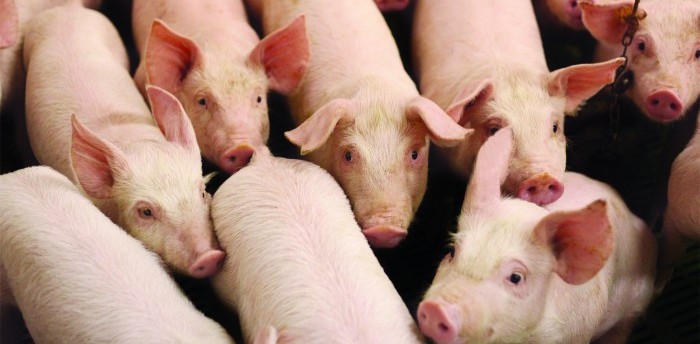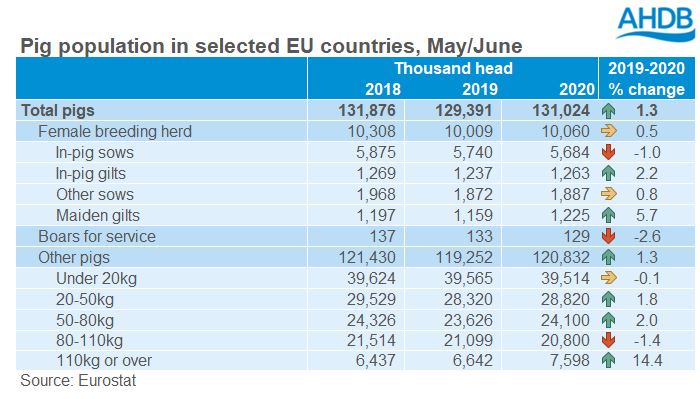Figures from May/June agricultural surveys have shown a slight increase of 1% in the pig herd of EU nations which participated in the survey. The total number of pigs in the EU member states carrying out the survey increased marginally to 131 million head, according to provisional data from Eurostat.
“This follows a period of decline in EU pig populations, as outlined in the May/June census last year though numbers had started to stabilise by last December,” AHDB trainee analyst Bronwyn Magee reported.
Pig numbers in Poland, Denmark and Spain have continued to grow, accounting for a large share of the increase across the continent. Spain was the largest contributor to an increase in overall EU numbers, up 911,000 head on the year.
The Dutch pig herd declined on the year (-185,000 head), which Ms Magee said could be a result of environmental regulations, which were enforced in January 2020.
In addition, the population in Germany also continued to decline, (-479,000 head) which was likely influenced by increasing legal requirements, encouraging producers to exit the industry, and with ASF now disrupting the country’s export prospects the country’s pig population is likely to fall further.
EU female breeding herd increased very slightly on the year to 10.1 million, up by 0.5% where a degree of growth came from both maiden and in-pig gilts.
The largest increase to overall EU numbers was the number of pigs 110kg or over, up by 956,000 head on the year. The number of pigs between 20-50kg also increased on the year, up by 501,000 head and pigs between 50-80kg also increased by 474,000 head.
Ms Magee said that although the heavier pigs recorded in this census will have been slaughtered by now, modest growth in the number of younger pigs still points towards a slight increase in pork production in the latter part of this year.
She added: “Looking further forward, modest growth in the number of gilts in the EU breeding herd suggests some nations may be looking to expand production. This is particularly the case for Spain and Denmark, both exporting nations looking to capitalise on Chinese market opportunities, particularly as German herd numbers decline.”





